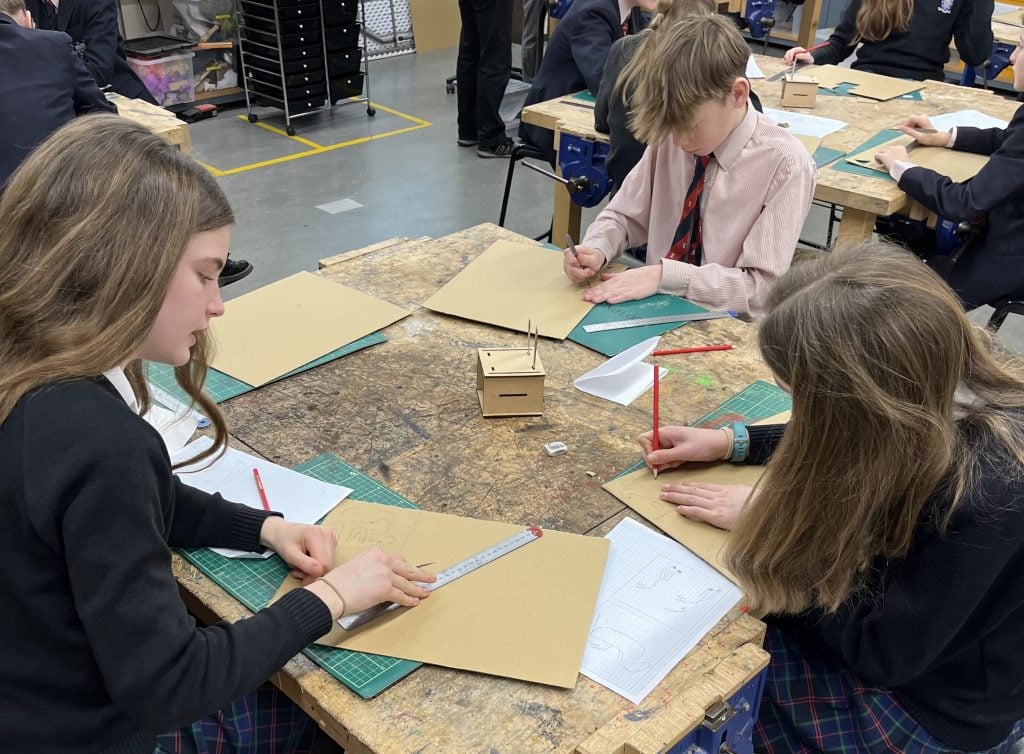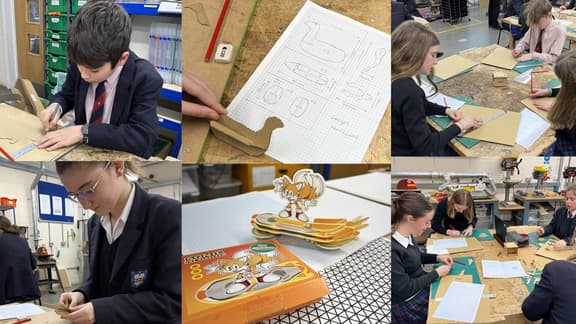When it comes to purchase motivation, it seems certain fast food chains have become synonymous with giving away toys in an attempt to entice children to eat their food. Given the world we live in and the impact our behaviour and the materials we use has on our planet, it was unsurprising when in 2021 McDonald’s pledged to offer sustainable Happy Meal toys made with dramatically less plastic by the end of 2025.
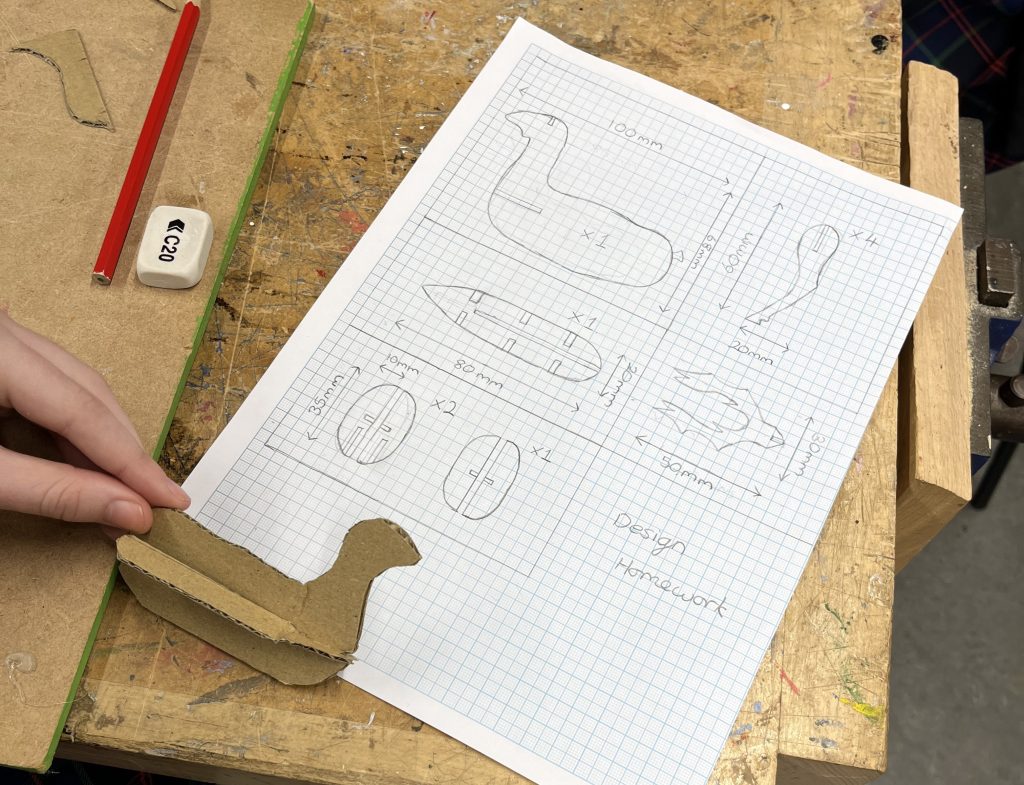
With this in mind, our Year 8 students were briefed to conceive, design and create sustainable slot toys, similar to those we are now seeing fast food chains include with meals for children, as part of their Design lessons. Learning not just about design, techniques, materials and processes used, but about considerations manufacturers have to make in the modern world in order for their products to appeal to all in this increasingly sustainability conscious world.
Talking about the process and her design, Amelie shared,
“I had a few different ideas when I first started, and we were encouraged to have at least four concepts in mind so that was really useful. Thinking about what I’d actually need to do in order to create each of the four concepts helped me to design with simplicity in mind – if it gets too complicated it would be incredibly difficult to produce. I decided on a final, favourite choice – an elephant, as from my drawings I could see how by having multiple parts that slotted together, I could create a three dimensional, simple toy that would resemble an elephant and be something children could create and play with.”
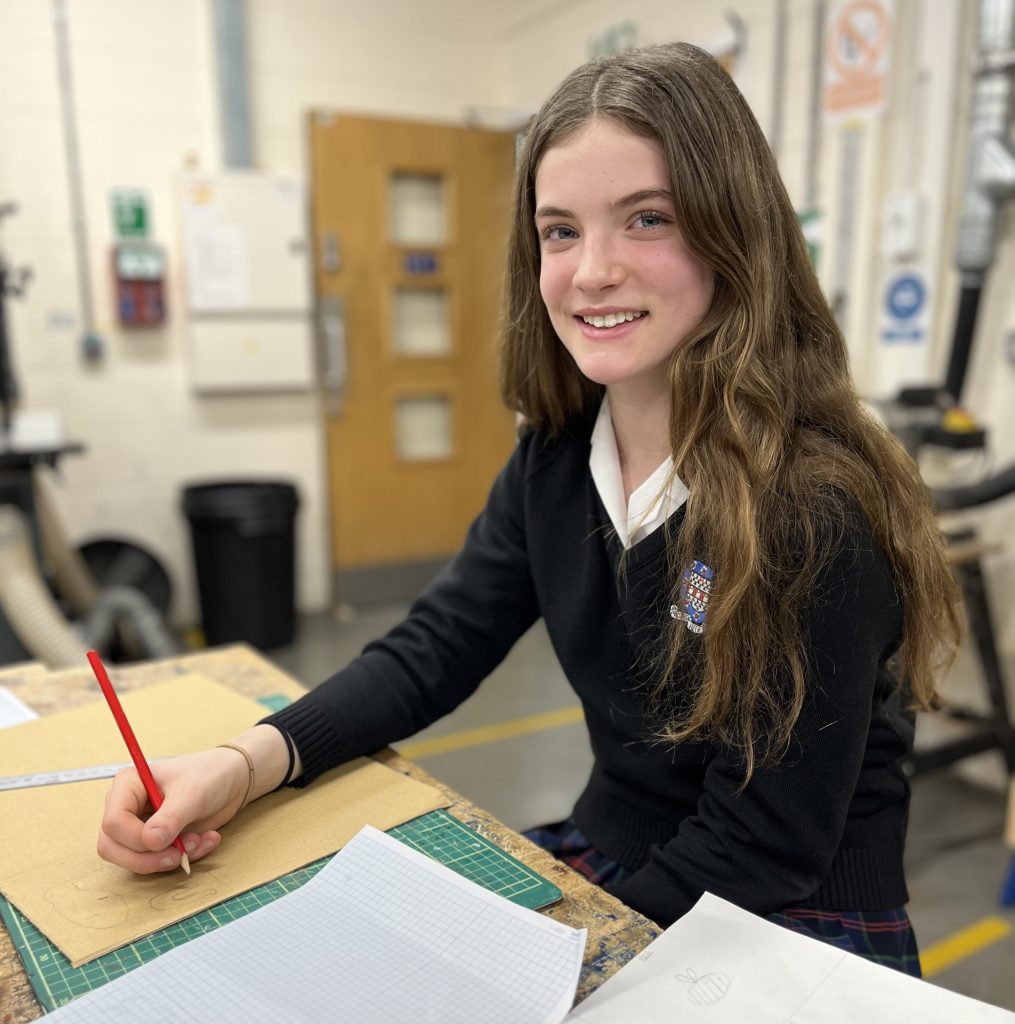
Drawing out the different sections she felt would be required helped Amelie to work out dimensions and measurements and she added, “When it came to drawing out the different parts I thought I’d need, we used graph paper, this really helped us to be precise and I really think without this part of the process you could go very wrong and create pieces either far too big or too small, the design wouldn’t work.”
Amelie and her classmates took their graph paper drawings and then laid them out onto cardboard, before cutting the pieces out for their first prototype. Exploring the process in this way enables students to identify potential issues and where mistakes are or could be made, and often leads to them simplifying the design at this point. All part of the learning, students recognise that this is something all designers go through, trial and error and the importance it plays in producing a final, correct design – even before you begin to manufacture it.
Henri talked about his design,
“I decided quite quickly on a plane, I’ve played with similar toys in the past and so I could visualise how it might all be cut out and fit together, and I really wanted to give it a try. I also wanted to make something that was fairly simple to understand and create – after all these are designs for children.”
He continued,
“You have to have more than one design though, otherwise if it doesn’t go as planned you have no back up.”
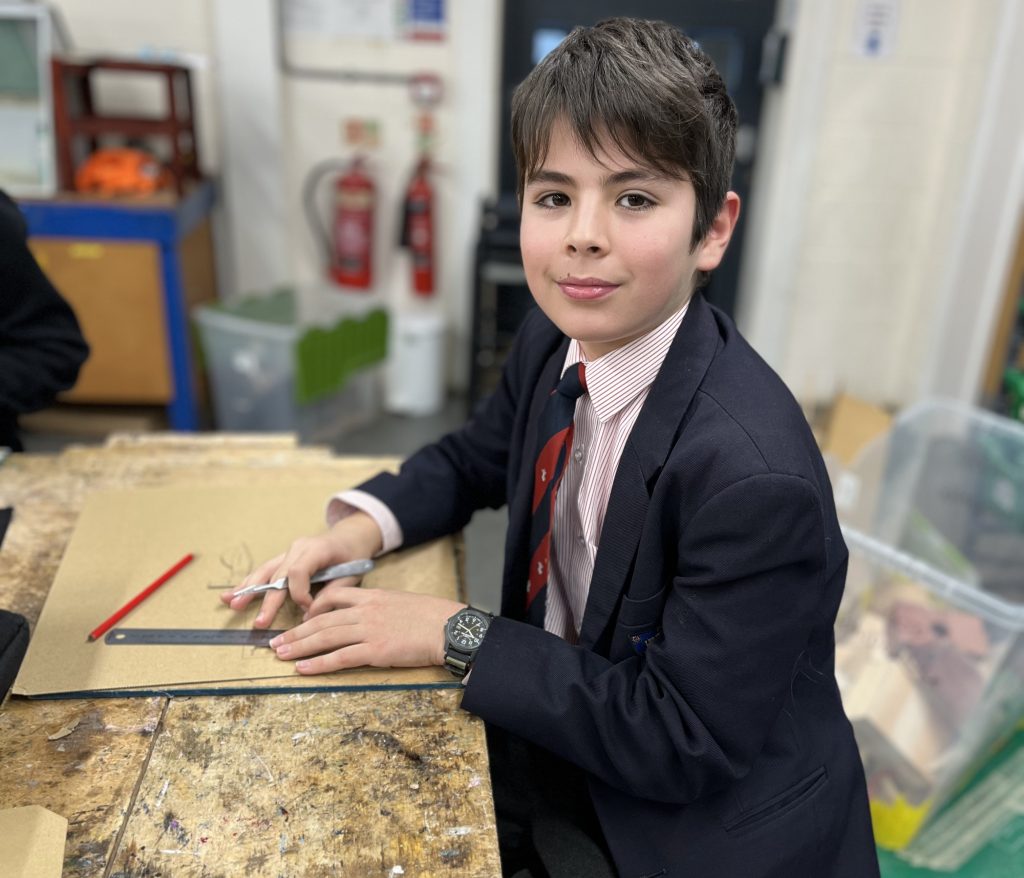
Learning how different parts slot together to build an end product has involved teaching and learning about accurate and precise drawing and cutting; without which the designs just won’t work. Learning from mistakes is a big part of Design education, and our teachers and students often discuss the fact that this is exactly how professionals and experts learn and come to their final pieces; quite often the mistakes lead the design in a different direction, and from this many masterpieces have been created. Mrs Cracknell explains further,
“Between Mr Littlechild and I, we have six young children, and we both recognised the innovation by McDonald’s to create highly imaginative and creative toys, using very basic but important principles – and increasingly sustainable materials. We wanted to include a similar project on the curriculum, to not only cover a range of useful practice skills for our learners, but to also highlight that sustainable design can be fun and imaginative too!”
Once the slot toys have been designed, cut out and tested to ensure they fit together accurately, students will develop their skills further on Adobe Illustrator to create surface graphics, exploring a range of graphic techniques to reflect their intended overall design concept. They will be introduced to a range of graphic options throughout the project, such as creating digital patterns and textures, in order to create a unique and original final product.
